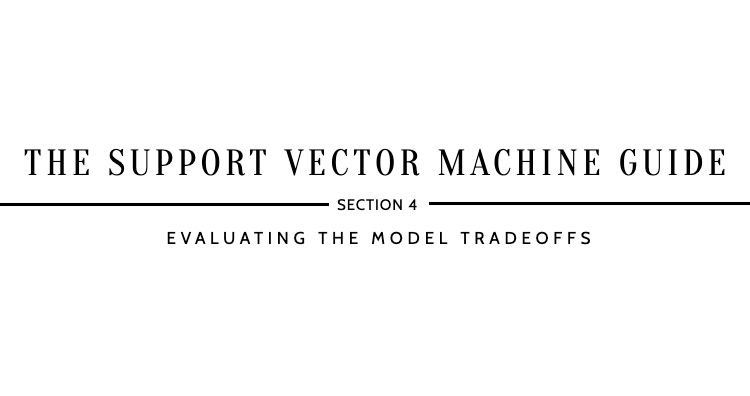
THE SUPPORT VECTOR MACHINE GUIDE
Section 4: Evaluating the Model Tradeoffs
Reference How to Improve Support Vector Machine? Section 3: Tuning the Model in Python, prior to continuing…
Q1: Is Support Vector Machine a simple or difficult classifier to understand?
Answer: Simple
Q2: Can Support Vector Machine solve linear problems or non-linear problems?
Answer: Linear Problems & Non-Linear Problems
Q3: Does Support Vector Machine increase in error as the number of features increases?
Answer: No Curse of Dimensionality
Q4: Can Support Vector Machine handle outliers or is sensitive to outliers?
Answer: Handle Outliers
Q5: Is Support Vector Machine a fast or slow classifier?
Answer: Slow
Q6: Can Support Vector Machine handle missing data or sensitive to missing data?
Answer: Sensitive to Missing Data
Q7: Can Support Vector Machine handle imbalanced data or sensitive to imbalanced data?
Answer: Sensitive to Imbalanced Data
Q8: Can Support Vector Machine handle multicollinearity among independent variables or is sensitive to multicollinearity?
Answer: Sensitive to Multicollinearity in Independent Variables
Q9: Is Support Vector Machine more prone to overfitting or less prone to overfitting?
Answer: More prone to overfitting with hard margin SVM; less prone to overfitting with soft margin SVM
Q10: Is Support Vector Machine an interpretable classifier or not an interpretable classifier?
Answer: Interpretable for Linear SVM but not for Kernel SVM (RBF, Polynomial, Sigmoid)
